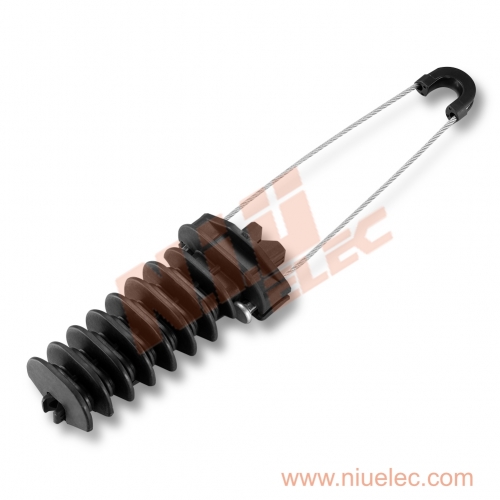By niuelec | 25 July 2024 | 0 Comments
Comparing Different Types of Anchor Clamps
When securing cables and ensuring they stay in place, the right anchor clamp can make all the difference. But with so many types available, how do you choose the right one for your project? In this blog post, we'll explore various anchor clamp, their unique features, and how to select the best one for your needs. Whether you're managing a complex cable system or working on a simple DIY project, understanding these options will empower you to make informed decisions.
Wedge-Type vs. Bolt-Type Anchor Clamps: Key Differences
Selecting between wedge-type and bolt-type anchor clamps depends on the specific requirements of your project. Wedge-type anchor clamps are known for their efficiency in quickly gripping cables. They work by using a simple wedge mechanism that tightens as more weight is applied. This type of clamp is particularly useful in dynamic environments where cables move or shift frequently. On the other hand, bolt-type anchor clamps provide a more robust and secure connection. By tightening bolts, these clamps offer a firmer hold, making them ideal for static setups where stability is paramount. Overall, the choice between wedge and bolt types hinges on whether you prioritize ease of use and flexibility or require a strong, unyielding grip.Advantages of Stainless Steel Anchor Clamps
Stainless steel anchor clamps stand out for their durability and resistance to corrosion. These clamps are perfect for harsh environments, such as outdoor installations or areas exposed to moisture. The inherent strength of stainless steel means that these clamps can handle heavy loads without deforming, ensuring long-term reliability. Additionally, their resistance to rusting preserves the integrity of the cable management system, reducing the need for frequent maintenance. Investing in stainless steel anchor clamps can be a cost-effective choice in the long run, thanks to their longevity and minimal upkeep requirements.
Exploring Plastic Anchor Clamps: When and Why to Use Them
Plastic anchor clamps offer unique benefits that make them suitable for specific applications. They are lightweight and easy to install, making them ideal for projects where weight is a concern. Despite their lighter build, modern plastic clamps are designed to provide robust support for cables, thanks to advancements in polymer technology. They are also resistant to many chemicals and UV exposure, which can be beneficial in industrial settings. However, they may not be suitable for extremely heavy loads, so it's crucial to assess the needs of your project before choosing plastic anchor clamps. Their cost-effectiveness and ease of use make them a popular choice for less demanding environments.Multi-Purpose Anchor Clamps: Versatility in Various Projects
Multi-purpose anchor clamps are designed to offer flexibility and adaptability across different projects. These clamps can accommodate various cable types and sizes, providing a one-size-fits-all solution that simplifies inventory management. Their design typically includes adjustable features that allow them to adapt to different requirements without compromising on performance. They are particularly useful in scenarios where the cable setup might change over time, as their versatility can accommodate new configurations without the need for entirely new clamps. By choosing multi-purpose anchor clamps, businesses can streamline their operations and reduce the complexity of their cable management systems.Choosing the Right Anchor Clamp for Cable Management
Selecting the right anchor clamp for cable management involves evaluating several factors, including the environment, load requirements, and cable type. First, consider whether the installation will be indoors or outdoors, as this will influence the material choice. Stainless steel may be best for harsh conditions, while plastic could suffice for indoor use. Next, assess the load requirements—heavy-duty applications might require bolt-type clamps, while lighter setups could benefit from wedge-type or plastic clamps. Finally, think about the specific cables you are securing. Some clamps are designed to accommodate different cable sizes and shapes, providing a more customized fit. By carefully considering these aspects, you can ensure that your cable management system is both efficient and reliable.Understanding the different types of anchor clamp and their applications can significantly impact the efficiency and reliability of your cable management system. From the quick adaptability of wedge-type clamps to the robust hold of bolt-type clamps, each option has its unique advantages. Stainless steel clamps offer unmatched durability, while plastic clamps provide a lightweight and cost-effective solution. Multi-purpose clamps bring versatility to various projects, making them a valuable addition to any toolkit. By choosing the right anchor clamp for your specific needs, you can enhance the performance and longevity of your installations. For more guidance on selecting the perfect anchor clamp, consider reaching out to a trusted supplier or consulting with industry experts.
Leave a Reply
Your email address will not be published.Required fields are marked. *
CATEGORIES